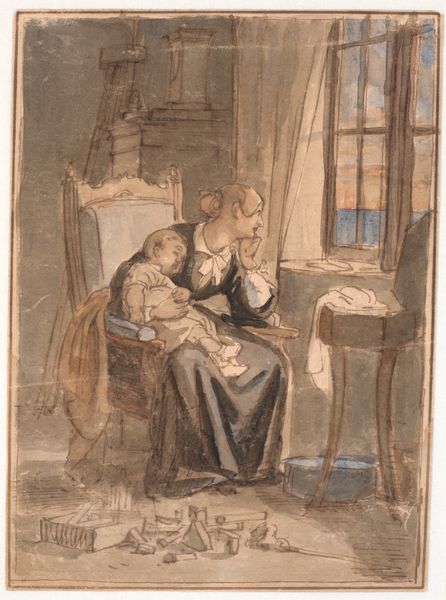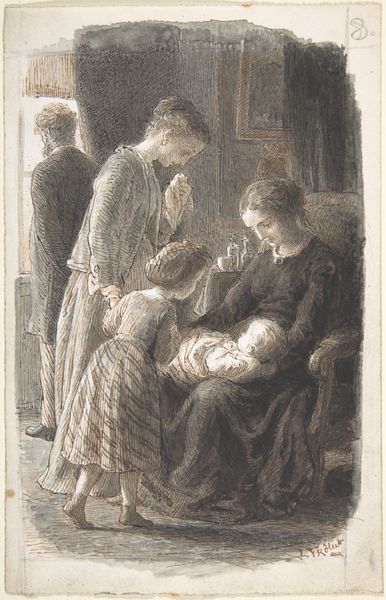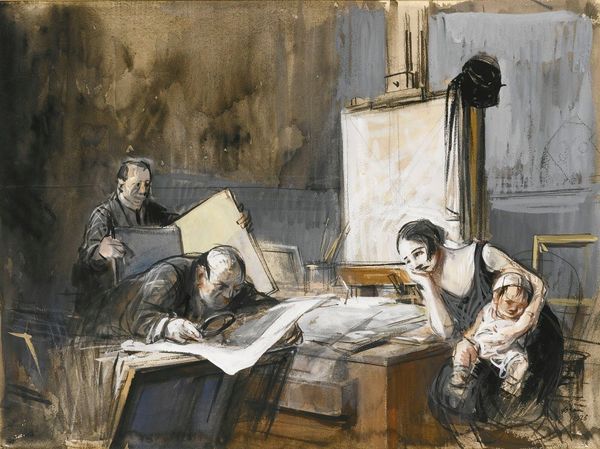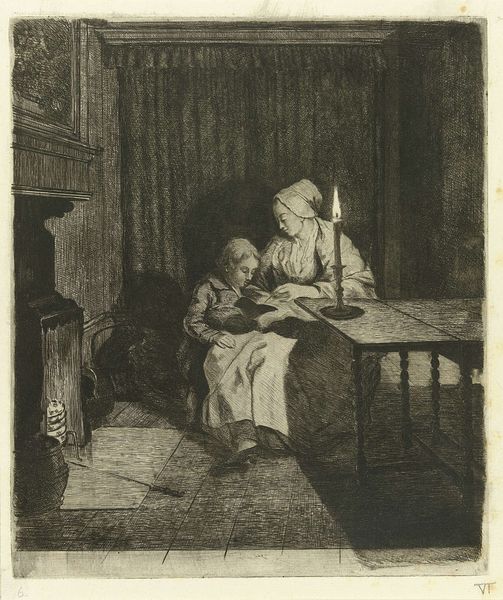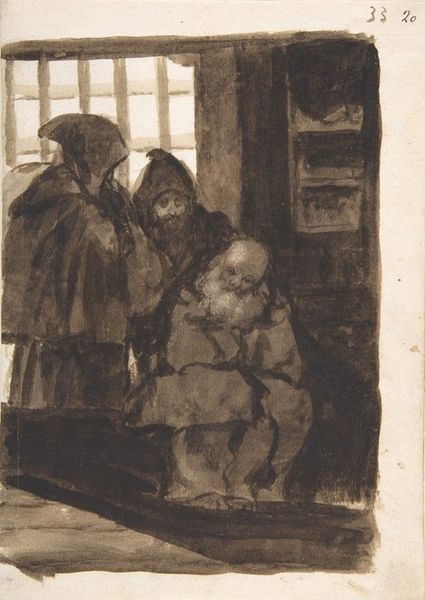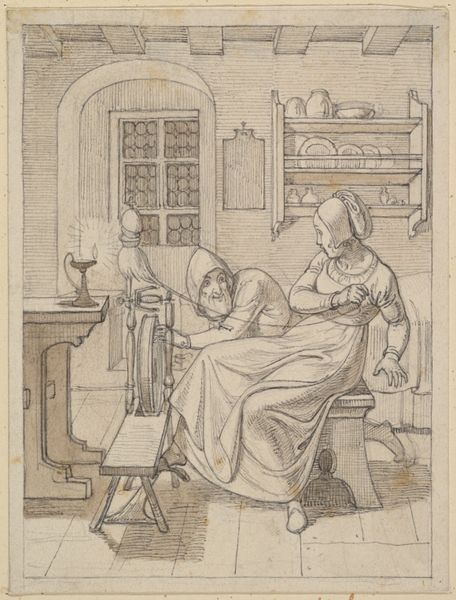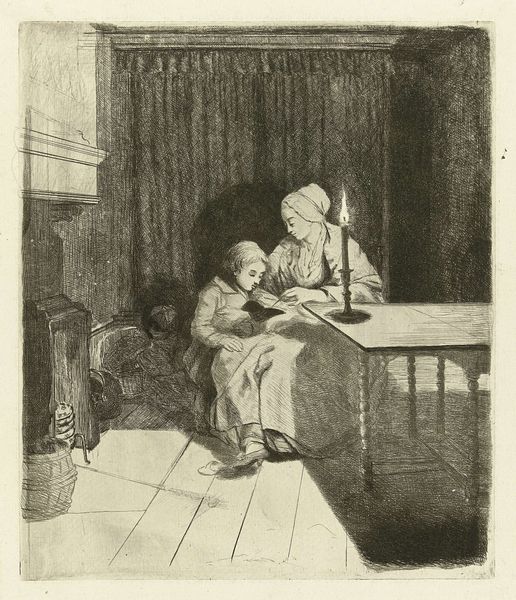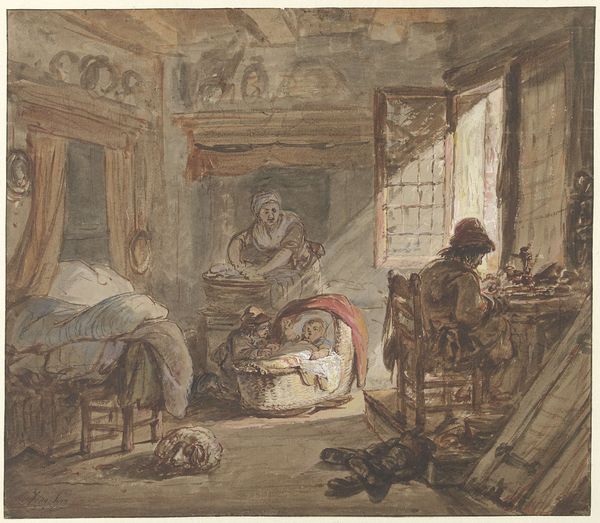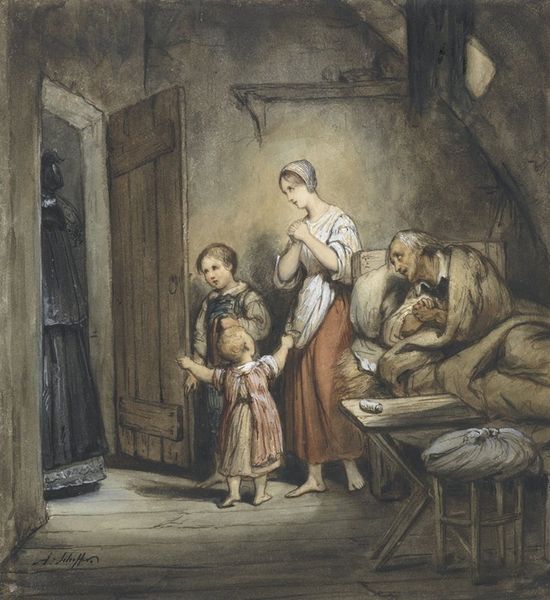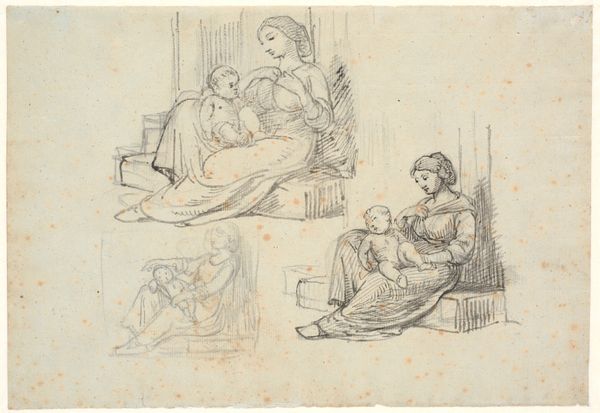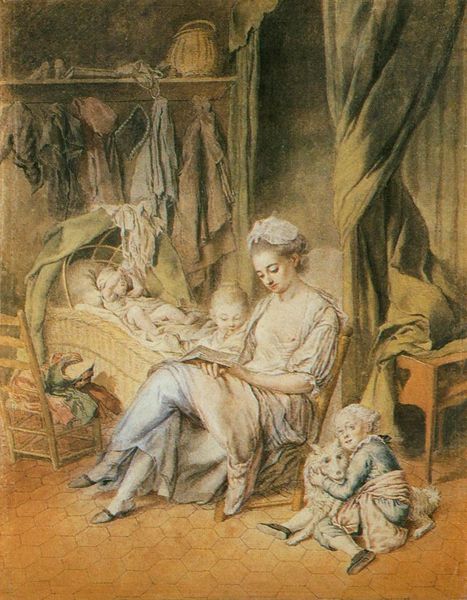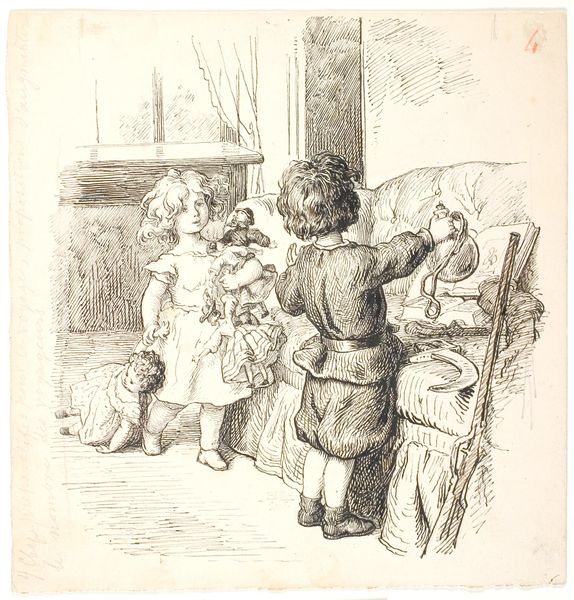
Copyright: Public Domain: Artvee
Curator: Wilhelm Marstrand’s "I skumringen. Fru Marstrand med sønnen Poul," painted in 1853, offers a tender, intimate glimpse into domestic life rendered in watercolor. Editor: There's such a melancholic quiet about this piece. It's like stepping into a hushed room where the air hangs heavy with unspoken thoughts. Curator: Indeed. Note how Marstrand orchestrates the composition: the mother’s gaze directed towards the window, the child sleeping soundly in her arms, the scattered toys on the floor… these elements converge to articulate a subtle narrative. Editor: Those toys! There is an untidiness that makes me feel good; the opposite is true in real life but here in art I don’t mind. It says "life," doesn’t it? The cool palette really underscores that quiet pensiveness you mentioned, though. Even the light filtering through the window seems subdued, almost reluctant. Curator: Precisely. The tonal gradations, characteristic of Romanticism, serve not only to depict the scene realistically but also to evoke a particular mood. Semiotically speaking, the window can be interpreted as a symbol of longing or a yearning for something beyond the domestic sphere. Editor: Maybe she's wishing for her son to stay this small forever, you know? They often depict motherhood as beautiful and easy in these old paintings; this one doesn't have that artificiality. Or she is pondering the unknown fate that awaits her son! It's that tiny bit of uncertainty that gives the work its power. Curator: An insightful interpretation. What fascinates me is Marstrand’s mastery of watercolor—the fluidity and translucency of the medium lend a certain ethereal quality to the image. The swift brushstrokes articulate the scene. Editor: Thinking about it, this moment captures something so universal, so fundamentally human. It's beautiful. Thanks for showing me that in your structural description of the objects in view. Curator: My pleasure. Ultimately, the painting becomes a study of maternal contemplation. It allows for meditation on human connection and transient time.
Comments
No comments
Be the first to comment and join the conversation on the ultimate creative platform.
